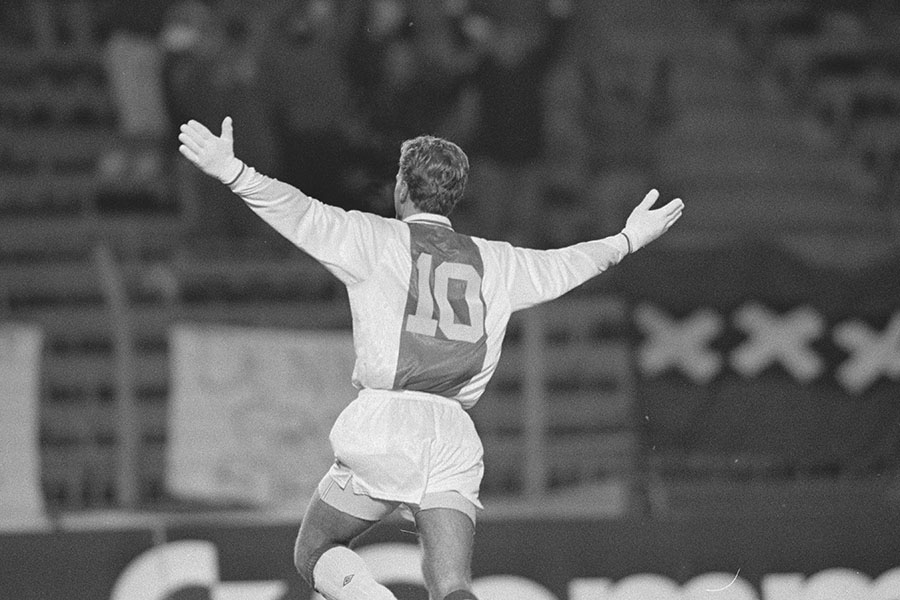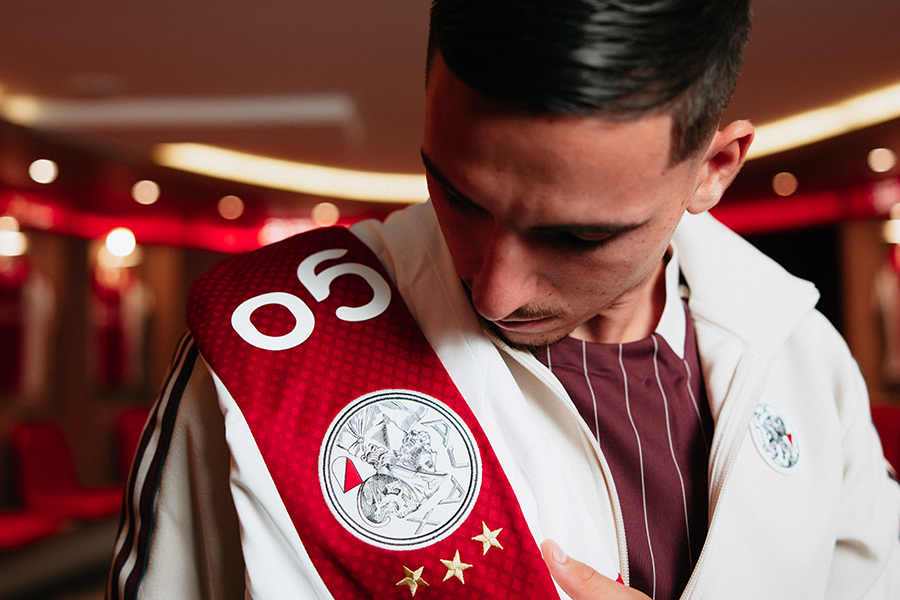History breeds expectation, and this seems especially true for shirt numbers. Since Johan Cruyff once chose to wear number 14, the number has become nearly sacred. With the best player in the club's history in the team, Ajax gained worldwide fame. Since 2010, number 14 is no longer issued to first-team players. The same applies to number 34 – the former number of Abdelhak Nouri, which has also been retired.
Early years
The number ten holds a special place in the Ajax philosophy. In earlier years, club greats like Henk Groot and Klaas Nuninga frequently wore the number 10 shirt. In the 1960s, shirt numbers weren't assigned to individual players, so they rotated. Still, Groot’s unmatched goal-scoring and Nuninga’s tactical finesse gave the number a certain aura. Even then, it came with expectations.
Want your Ajax shirt with Oscar 10 on the back? Order it now in the Ajax Fanshop.
This was even more the case after the breakthrough of Cruyff. He too played many matches, initially as a striker, wearing number 10 for Ajax. The same applied to Dick van Dijk; it all depended on how coach Rinus Michels lined up the team tactically. Van Dijk wore the number in the 1971 European Cup final win over Panathinaikos. In the golden 1970s, at the peak of Cruyff and Ajax, the number was sometimes also seen on Gerrie Mühren's shirt.
The Volendam native wore the number during the 1973/1974 season, including the European Super Cup final against AC Milan. Ajax won 6-0, partly thanks to a successful penalty from Mühren. It was the last trophy of the Golden Ajax era. The eldest Mühren brother was arguably the most technically gifted player in the squad and typically played as a left midfielder. It showed that shirt numbers and positions were only loosely connected.
Bergkamp and Litmanen
Fixed positions and the shirt numbers that corresponded with them only became the norm in the 1980s and especially the 1990s. Dennis Bergkamp evolved into a feared number 10. Often operating as a second striker, the stylist formed a strong duo with centre-forward Stefan Pettersson. Still, even the homegrown Bergkamp wore various shirt numbers over the years – seven, for example, but also eight. Given his role and position, Bergkamp arguably deserved a 9.5.
Jari Litmanen seamlessly succeeded Bergkamp. Under Van Gaal, the Finn filled the number ten role in a slightly different way. Litmanen was more of a midfielder than the 'half-striker' Bergkamp. He moved more between the lines, more of a creator than a goalscorer. Litmanen had a key role in the second golden era that Ajax enjoyed in the mid-1990s.
It was also Van Gaal who assigned fixed shirt numbers to positions in his team. In the Van Gaal system, the number ten was the central attacking midfielder. Thanks to his tactics and the way Bergkamp and later Litmanen played that role, the 'Ajax number 10' gained an extra magical ring to it.
Fixed shirt numbers
Litmanen was also literally Ajax's first fixed number 10 – thanks to the introduction of permanent shirt numbers and player names. In the 1996/1997 season, this combination only applied to UEFA Champions League matches. A season later (1997/1998), names and numbers became mandatory in the Eredivisie. Until his departure in 1999, Litmanen was the beloved and immensely popular '10' of Ajax. Since his old number had already been taken, he chose number 20 upon his return in 2002 – twenty being twice ten.
New managers brought new ideas. Over the seasons, Ajax's tactical setup evolved. Instead of attacking midfielders, the team sometimes featured more defensive-minded midfielders.
Yet, when reviewing some of the Ajax players who wore number 10 since 2000, one key characteristic stands out again: excellence. After Danish stylist Brian Laudrup, Rafael van der Vaart became another jewel in Ajax's crown. The number tens were all exceptional, attack-minded players. Entertainers, through and through. Game-changers. Defining and talked-about – those too are traits that characterise a number 10 at Ajax.
Siem, Davy, Hakim and Dusan
What has been true since the early 1960s has essentially remained unchanged. Ajax's number ten is one of the best – if not the best, most talented, or most creative – players in the team. After Van der Vaart, Wesley Sneijder carried the torch. The future record international was primarily a midfielder, known for his relentless pressing and goal-scoring instinct. A quick, sharp, and attacking mind. Via Siem de Jong (our number 10 during the securing of the third star on the Ajax shirt) and Davy Klaassen, both Hakim Ziyech and captain Dusan Tadic also donned the iconic number.
















